About the Creator of Char Dham Yatra Adi Shankaracharya was an 8th-century Indian theologian and philosopher who is known all over the world for not
About the Creator of Char Dham Yatra
Adi Shankaracharya was an 8th-century Indian theologian and philosopher who is known all over the world for not only unifying the entire Hindu population but also established the Advaita philosophy. His collective works done in Sanskrit discuss about the unity of the inner self. He is also famous for giving commentaries various schools of ancient Hindu thought like – Brahma sutras, Upanishads and Bhagavad Gita. Along with establishing the all India and the Chota Char Dham Yatra of Uttarakhand he is also famous for creating numerous matths across India.
History of Char Dham Yatra
Also famous with the name of Chota Char Dham Yatra of Uttarakhand this pilgrimage takes you across 4 of the most highly revered pilgrimage destinations in India which are – Kedarnath, Badrinath, Gangotri and Yamunotri. This place was reestablished as an attempt by the 8th-century sage, saint and philosopher, Adi Shankaracharya with an aim of propagating the Advaita philosophy within the population of India. Initially during the ancient ages only sadhus and people who could afford to travel to Char Dham with an entourage used to make this trip. However, post the 1962 Indo – China war India put in massive efforts in creating and building better methods of connectivity for infrastructure. All this ease of access within the Char Dham sites encouraged the population of India to travel on this circuit in the Himalayas and have an incredibly spiritual time. Every place on the Char Dham circuit map consists of a rich and spiritual historical background and extremely vibrant legend.
History of Badrinath
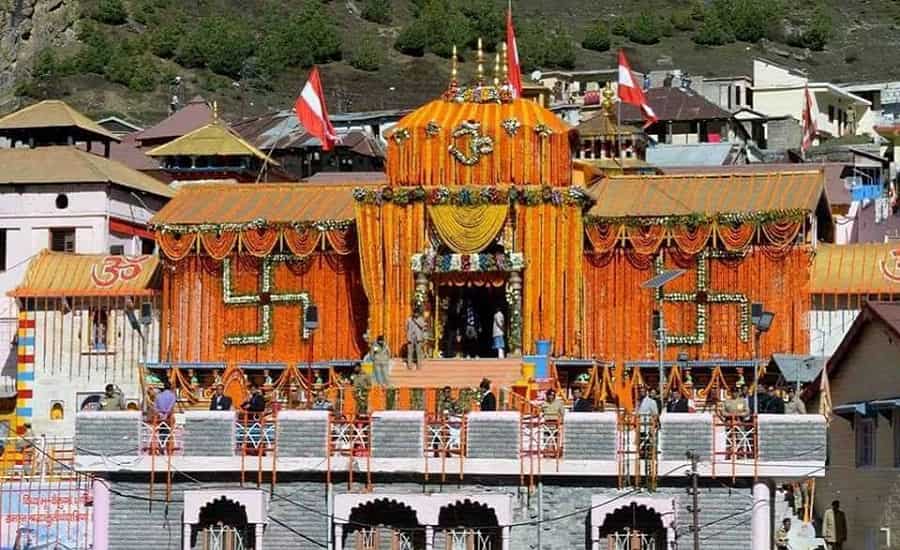
Situated within the Chamoli district of Dev Bhoomi Uttarakhand, Badrinath Dham is dedicated to the Badri form of Lord Vishnu. The place is named so since the entire region was covered in a thick and lush covering of Badri or jujube tree. This colorful temple is one of the most important pillars of not just the Chota Char Dham Yatra of Uttarakhand but also of the all India Char Dham Yatra. Sitting against the backdrop of the snow-clad peaks of Nar and Narayan, Badrinath Dham is a crucial Diva Desam of India. This is one of the most popular and holy shrines for avid Vaishnavites of India and attracts a number of pilgrims from all over the world.
Legend – There are innumerable mythological stories related to the origin of Badrinath Dham. One of the most widely accepted beliefs is that when Lord Vishnu was performing some intense penance goddess Laxmi (his consort) turned herself into a Badri tree and panned herself above him in order to save him from the harshening weather conditions. Another legend relates to how Lord Vishnu had tricked Lord Shiva into leaving Badrinath Dham for him.
History of Kedarnath
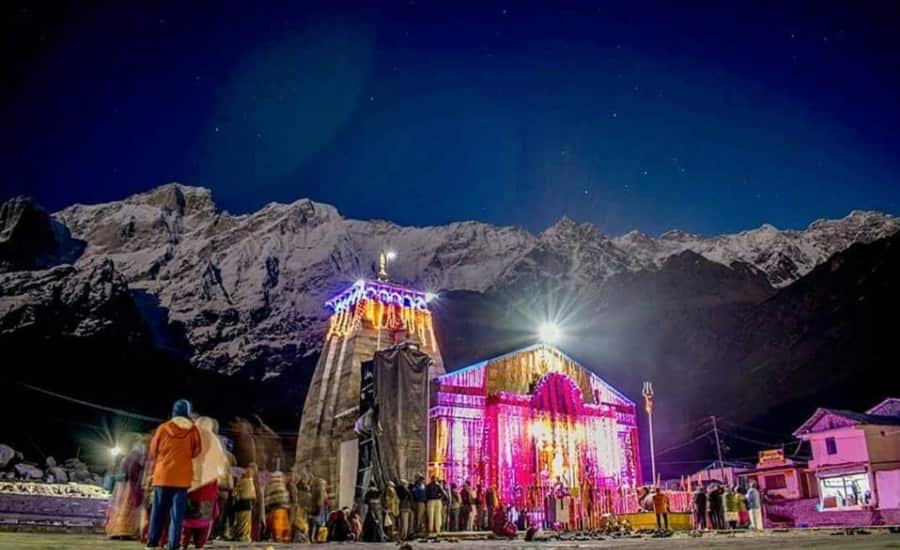
Dedicated to the Kedar form of Lord Shiva and known for being the highest placed Jyotirlingas in India, Kedarnath Dham is one of the most popular temple that is dedicated to Lord Shiva. Sitting amongst the lush greenery of the Garhwal Himalayas the presiding idol of the temple is in the form of a triangular, black stone. Sitting majestically on the banks of one of the tributaries of the holy river of Ganga, Mandakini, Kedarnath is also the place where the propagator of Advaita philosophy Adi Shankaracharya is said to have taken his last breath. It is a popular belief that according to the promise kept by Lord Shiva at the request of Nar Narayan he has been presiding continuously here ever since.
Legend – According to mythological and historical accounts, it was believed that after the great war of Kurukshetra the Pandava brothers are said to have paid a visit here with an aim of asking for forgiveness from their sin of killing their kin. After Bhīma pulled the lord out who was hiding in the form of a bull the Lord forgave the brothers looking at their dedication. They are also believed to have established the famous panch Kedar yatra of Uttarakhand which is visited by avid Shaivites.
History of Gangotri
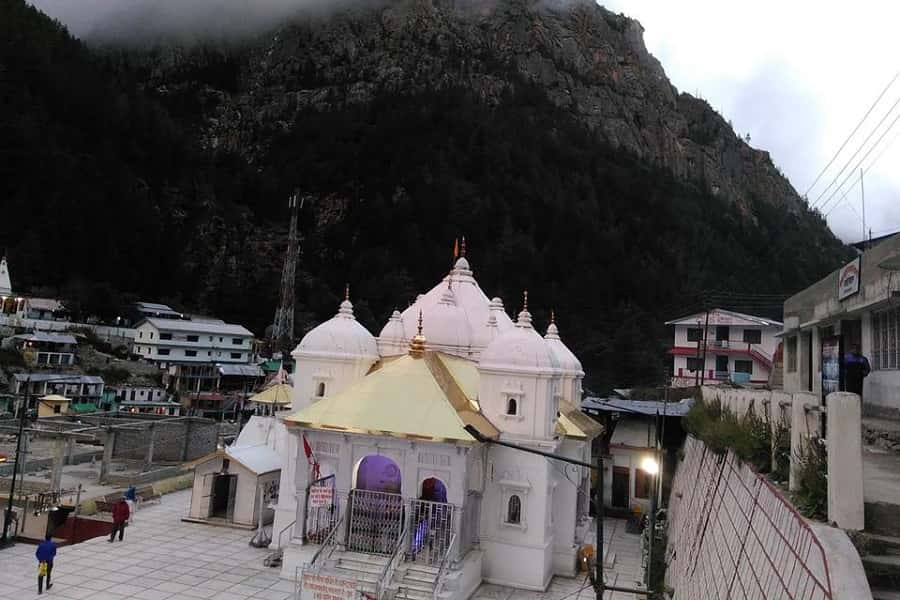
Situated on the banks of the holy river of Bhagirathi and right on the origin point of the holiest river of India, Ganga, this place is located amongst the Greater Himalayan ranges and within the district of Uttarkashi. Sitting on an elevation of 3,100 metres above sea level, Gangotri Dham is surrounded by incredible and unmatched greenery. The origin of this river can be easily traced and visited back to the Gaumukh glacier which is frequented by avid trekkers and adventure enthusiasts. The gleaming white temple structure of Gangotri was constructed by the great Nepalese general Amar Singh Thapa who was also known as the ‘lion of Nepal’.
Legend – The legend of Gangotri Dham dates back to the time when king Bhagirath decided to provide salvation to his bygone ancestors. King Bhagirath decided to perform some intense penance and chose the ‘Bhagirathi Shila’ to perform his meditation penance to Goddess Ganga and ask her to mark her presence in the earthly realm from the heavenly realm in order to wash away the ashes of his ancestors and grant them salvation. This is the only popular mythological account of Gangotri Dham.
History of Yamunotri
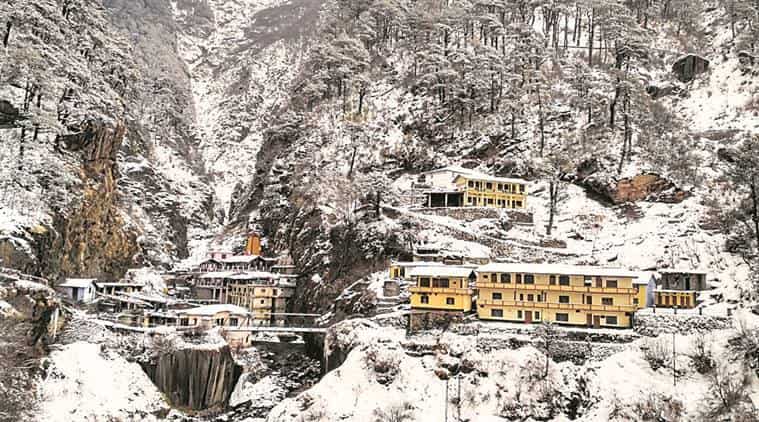
Flanked by the lush green Garhwal Himalayas on all the sides and sitting majestically on the edge of a cliff against the backdrop of the impeccable beauty, Yamunotri Dham marks the origin spot of the holy river of Yamuna. The name of the temple has been derived from the Yamuna River that flows past the temple. The river finds its source in the nearby glacier of Champasar which forms the foothill of the holy Bandarpoonch peak. The temple is situated on an elevation of 3,293 metres above sea level and is dotted all over with naturally occurring hot water springs that is supposed to hold medicinal properties.
Legend – As per one of the most popular legends related to the temple of Yamunotri is that one of the most prominent sages – Asit Muni, had set up his hermitage by the banks of this river. It was his daily ritual to take holy dips in both the holy rivers of Ganga and Yamuna. However, due to old age he was not able to continue this ritual. In order to appreciate and reward his efforts and as an honour to him a stream of River Ganga appeared opposite to Yamuna and he was then able to continue on with his daily rituals.
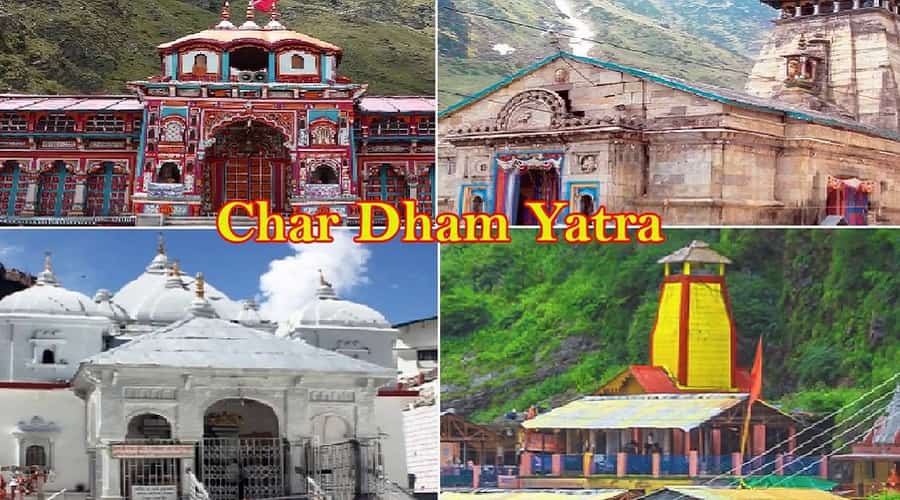

COMMENTS